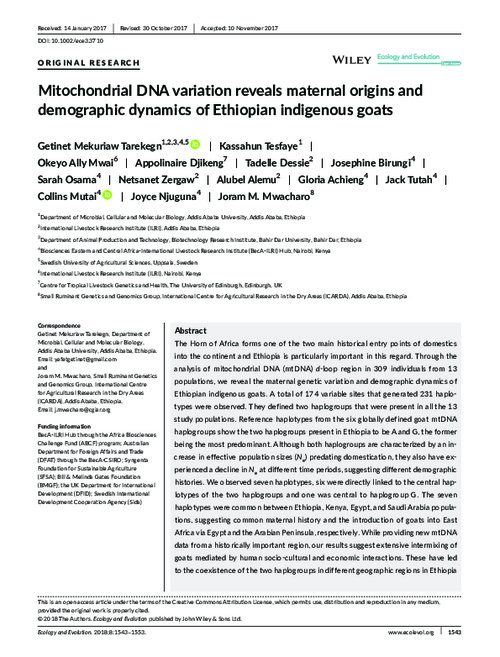Mitochondrial DNA variation reveals maternal origins and demographic dynamics of Ethiopian indigenous goats
Abstract
The Horn of Africa forms one of the two main historical entry points of domestics
into the continent and Ethiopia is particularly important in this regard. Through the
analysis of mitochondrial DNA (mtDNA) d-loop
region in 309 individuals from 13
populations, we reveal the maternal genetic variation and demographic dynamics of
Ethiopian indigenous goats. A total of 174 variable sites that generated 231 haplotypes
were observed. They defined two haplogroups that were present in all the 13
study populations. Reference haplotypes from the six globally defined goat mtDNA
haplogroups show the two haplogroups present in Ethiopia to be A and G, the former
being the most predominant. Although both haplogroups are characterized by an increase
in effective population sizes (Ne) predating domestication, they also have experienced
a decline in Ne at different time periods, suggesting different demographic
histories. We observed seven haplotypes, six were directly linked to the central haplotypes
of the two haplogroups and one was central to haplogroup G. The seven
haplotypes were common between Ethiopia, Kenya, Egypt, and Saudi Arabia populations,
suggesting common maternal history and the introduction of goats into East
Africa via Egypt and the Arabian Peninsula, respectively. While providing new mtDNA
data from a historically important region, our results suggest extensive intermixing of
goats mediated by human socio-cultural
and economic interactions. These have led
to the coexistence of the two haplogroups in different geographic regions in Ethiopia

